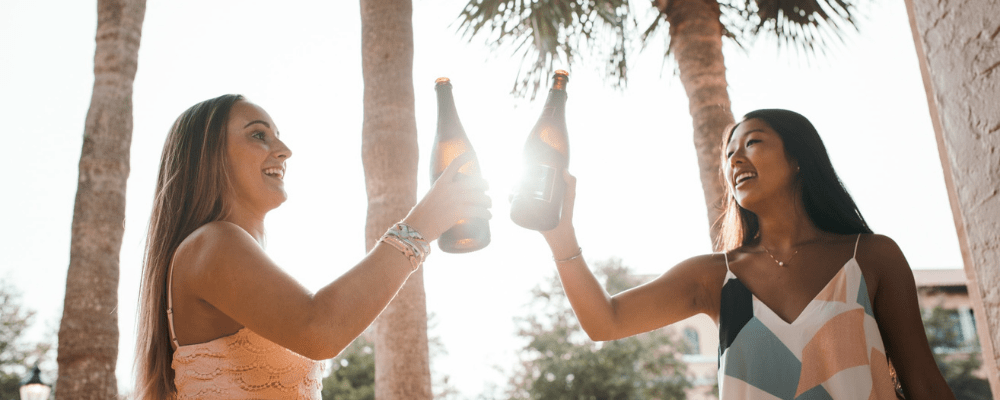We decided to do a throwback this week and look at some of our favourite Human’s of Wine answers around the theme of connecting with consumers. Enjoy…
On the Wine Market…We asked our Human’s of Wine to shed some light on their experience in the wine market, as a big part of what we do at Cellr is make true direct to consumer marketing easy for producers. Find out more here.
Derek Mossman Knapp, Co-founder of Garage Wine Co. in Chile
I understand your Instagram account has been a big part of you growing your fan base and telling the Garage Wine Company story. For those unfamiliar with your story, why do you think you have been successful at building virtual relationships?
Instagram is often the select bits where people open special bottles with picture perfect food. But if you capture action like Don Rene, the farmer behind Maquina the horse, and you name them in the picture or short video as the plough squeaks past, it is much more meaningful. And I do like to use double entendre and comical-twisted titles that sometimes mean something only to few.
What I can never understand is the pictures of critics’ points? What is with that? What a snore. Do I repost what others post about our wines, guilty as charged, I have done that, but lining up bottles like soldiers with their test scores- no. Why would I do that to my audience.
Andrea Leon, Winemaker at Lapostolle Winery in Apalta, Chile
What do you think is the most important aspect of a wine that a person drinking it should know about, and further what is the story that a winery should be telling?
First of all is how the wine will taste, as that brings in the origin and the grape varietal, and eventually the terroir and how it’s made. More details like who the people are that produce it, how many years the vineyard has been on that land and who is taking care of it are also important. Also, if the production of that wine contributed to the place and people near it in a sustainable way.
Hannah Van Harskamp, Graphics Guru at Unico Zelo
What role does graphic design play in developing a relationship between a brand and consumer in the wine and spirits space?
I believe graphic design plays a very important role in developing a relationship between a brand & consumer. It communicates the feelings, emotion, characteristics and values of a brand in a visual manner. It is important to keep consistency with the designs (no matter how big or small the project be), as this continues to emphasise these characteristics. Over time the consumer, distributor or whomever will then associate these characteristics to your brand/products/company.
Sara Bezzan, Social Media Wine Educator, @GourmetBlizzard
What advice would you give to winery’s looking to engage more consumers in the digital space?
Simple, that times are changing. Though the wine industry can be late in adopting new trends, before everyone realizes it wine producers will have no choice but to communicate with their consumers and new generations using social media and digital platforms. Those who do not will lose market share in the long run, to those who are present in the digital and social world.
Marisa Sergi, Founder of RedHead Wines and Co-Owner of L’uva Bella Winery in Ohio, USA
I have noticed you are very active on social media, and also have a lot of great digital content online to engage consumers. How important is building a virtual relationship with consumers in the US wine market?
It is one of the most important things you can do in any market, not just the US. A significant amount of people are always online and on their phones. You must try to be out there so you are always top of mind. This helps set you apart from any competitor.
Matt Wilson, Photographer and Visual Storyteller
From your observations as a creator within the wine industry, what do you think winemakers should be doing to connect with wine consumers?
I think that winemakers and the industry as a whole need to connect better with consumers. Some do but not enough. Stories need to be told about the people involved in the wine making, growing and process. Not just the rich owners telling how their great grandfather planted the vines in impossible conditions because they had the money to pump water 6 kilometers up a hill. In my photography I always try to show lifestyle. If you want to get new young consumers talking of terroir, you will only attract the very technical ones. Most people who buy wine do not care about the terroir, they want to know about the animals at the winery or how close to the sea it is for a picnic. My input is never the technical side, I understand it’s importance, but not for most consumers.
Lucy Golding, Co-Owner of Golding Wines in the Adelaide Hills, South Australia
What other channels do you use to engage customers to buy your wine outside the cellar door? What do you do in these channels?
We have always recognised the value of direct to consumer sales, now more than ever in the current COVID environment, and therefore we have a strong digital marketing strategy and engage regularly with our database and our wine club members via email. We also engage with our followers on social media regularly. I strongly feel that social channels are an opportunity for authentic engagement and enabling an ongoing conversation with our followers, rather than an avenue for driving sales. But ultimately, if you are creating engaging content and facilitating a two way conversation, that is a relationship that could lead to future sales.

